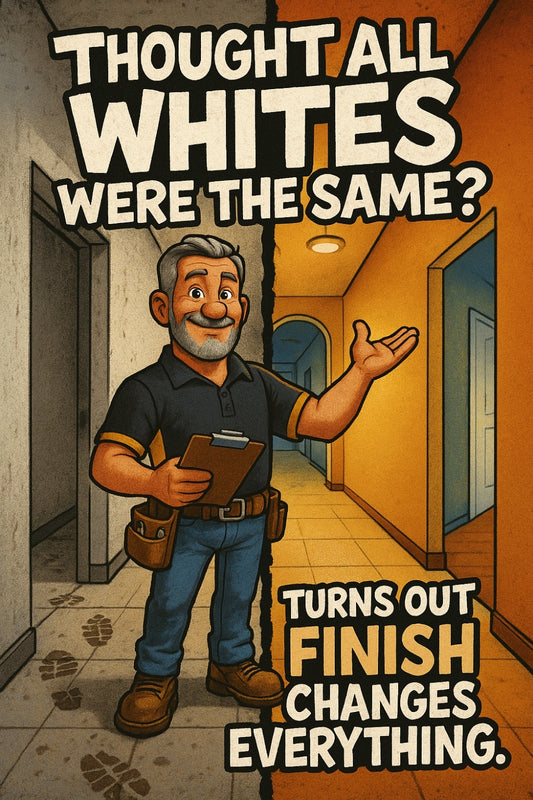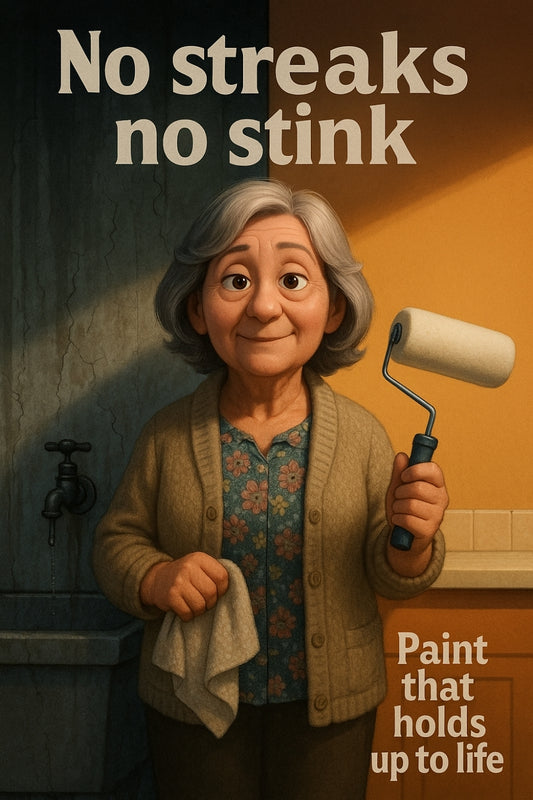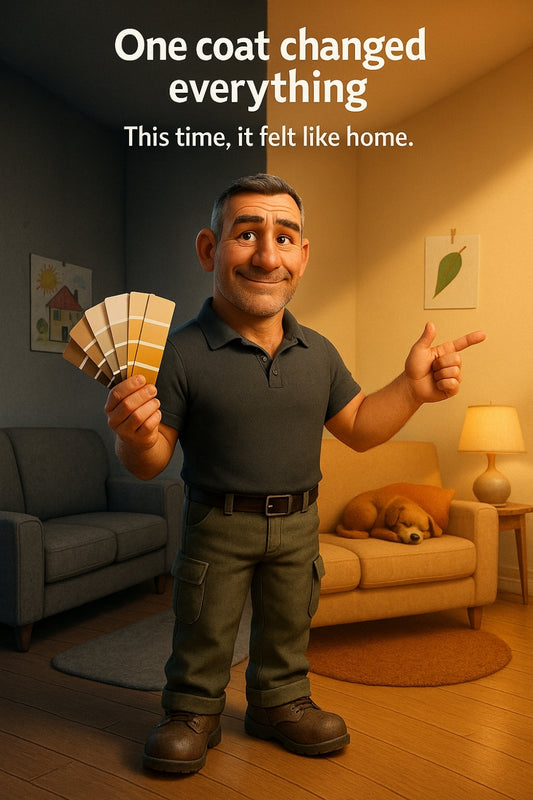
Foam or bristles? The answer could make or break your next glow-up project.
Share
One brush doesn't fit all — here's how to choose the right one for your project
So, foam or bristle? It's not just a hardware aisle dilemma
Ever found yourself in the painting aisle, brush in hand, silently asking: what’s the actual difference between these two? One’s soft like a sponge cake, the other’s wiry like a vintage broom – and somehow, they both promise a "smooth finish." But the truth? Choosing the right brush could be the secret behind that photo-worthy wall or botched patch job.
Let’s start with foam brushes: light, cheap, and weirdly satisfying
Foam brushes are the introverts of the brush world — quiet, low-fuss, but surprisingly effective in the right space. They’re typically made from dense polyurethane foam and have no bristles. What does that mean in real life?
- No brush marks. The foam lays paint on smoothly, great for when you want that flawless, streak-free finish.
- Perfect for quick jobs. Think painting picture frames, touching up nicks, or sealing detailed corners without the agony of overzealous bristles fanning out.
- Disposable. They don’t love being washed. Most are one-and-done.
But — and this is a big but — they’re not the MVPs for every job. They can tear easily on rough surfaces, and don’t hold much paint, so you’ll be dipping more often than a chip at a birthday party.
Bristle brushes: old-school heroes with grit
Then there’s the bristle brush. Usually made from natural hair (often hog) or synthetic fibres like nylon or polyester. They’ve been around forever — and for good reason.
- Versatile. They handle everything from walls and trims to doors and skirting boards.
- Durable. A good quality bristle brush can last years with proper care.
- Great for cutting in. The edge control makes lining walls and ceilings cleaner and neater.
Still, they’re not perfect. Cheap bristles can shed like a golden retriever in summer, and sometimes they leave streaks if overloaded with paint or not angled correctly.
“It’s not about finding the ‘best’ brush — it’s about choosing what works best for this job,” says Candeece from the paint section. “You could be using top-notch paint, but if your brush doesn’t suit the surface, you’ll end up frustrated.”
So which should you use? Let’s match brush to project
Some projects thrive with a foam brush. Others absolutely need bristles. Here’s the cheat sheet:
Use a foam brush when:
- You’re staining timber furniture (foam soaks and spreads thinner layers)
- You want a streak-free finish on a small décor piece
- You’re working with polyurethane or varnish — foam glides without bubbling
Use a bristle brush when:
- You’re painting walls, trims, or any large surface
- You need to cut in with precision near ceiling lines or skirting boards
- You’re applying thicker paints that need to be worked into textured surfaces
What about angled vs flat?
Great question. Flat brushes are your go-to for even coverage – picture flat walls or fences. Angled brushes (also called sash brushes) give you control in tight spots. They’re brilliant for edging, detailed corners, and painting around window frames like a pro.
Here’s a story: the side-table rescue mission
A customer came in last month — she was mid-weekend project, redoing a retro side table and stuck between foam and bristle. She’d already laid down one coat of white with a foam brush, but it kept dragging weird lines in the corners. Turns out, for that slightly-textured laminate finish, a small synthetic bristle brush gave her the edge she needed — literally and figuratively. She came back to show us photos. Gave the old table a total glow-up.
Caring for your brushes (yes, even the cheap ones)
If you’re investing in a good bristle brush, clean it properly after each use. Warm water for water-based paint, mineral turps for oil-based. Hang it or lay it flat to dry. With foam brushes? Don’t overthink it — they’re not meant to stick around.
So... which brush is better?
That’s like asking if a pen is better than a pencil. Depends what you're drawing. Foam is the sleek, clean-finish legend for detail work. Bristle is the gritty all-rounder for anything with corners, grooves, or surface texture.
Whatever you choose, the most important thing is confidence. Take a second in store, hold them in your hand, look at the surface you’re painting, and trust your instincts. When in doubt – we’re happy to offer a no-nonsense opinion.
Here’s the truth: the right brush doesn’t just change your finish. It changes the way a whole space feels when you walk back in.
Happy painting,
— Candeece

Stay Connected
Follow our Facebook Page: Strathalbyn H Hardware on Facebook



